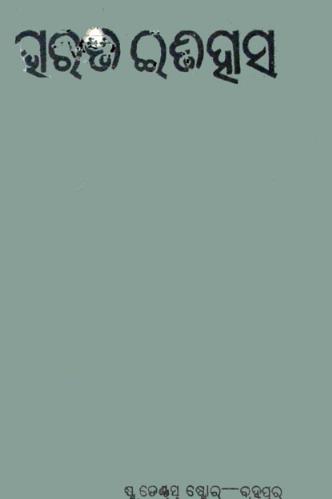In the history of Odia education, few texts have had such a profound impact as Bharata Itihasa, published in 1931 by the esteemed authors Kalia Panigrahi and Kulamani Misra. This textbook, which translates to The History of India, has become a cornerstone of Odia literature and education, serving as a comprehensive resource for students and scholars alike. Through its meticulously researched content and engaging narrative, Bharata Itihasa offers readers a deeper understanding of India’s rich historical tapestry.
At a time when India was navigating colonial rule and the quest for self-identity, Bharata Itihasa emerged as an essential educational tool that sought to instill a sense of pride and awareness of national heritage among students. Panigrahi and Misra crafted the textbook with the intent of promoting critical thinking about India’s past, encouraging learners to engage with their history in a meaningful way. The authors recognized that understanding one’s history is fundamental to shaping one’s identity and worldview, especially for the younger generation.
The structure of Bharata Itihasa is one of its most commendable features. The textbook is organized chronologically, guiding readers through the various epochs of Indian history, from ancient times through the medieval period and into the modern era. Each chapter is carefully curated to highlight significant events, personalities, and cultural developments that have shaped the subcontinent. This systematic approach makes the complex narrative of Indian history accessible and engaging, allowing students to connect with their past in a coherent manner.
Another notable aspect of Bharata Itihasa is its emphasis on regional history and culture. The authors understood the importance of situating Indian history within the larger framework of local narratives. By weaving in the contributions and experiences of different regions, particularly Odisha, they celebrated the diversity and richness of Indian heritage. This not only fosters regional pride but also emphasizes the interconnectedness of various cultures within the Indian subcontinent.
The pedagogical style employed in Bharata Itihasa further enhances its effectiveness as a textbook. Panigrahi and Misra employed a clear and engaging language that resonates with students. Their use of vivid examples, anecdotes, and illustrations helps to bring historical figures and events to life, making learning a dynamic experience. Additionally, the inclusion of discussion questions and activities at the end of each chapter encourages critical engagement and deeper exploration, allowing students to reflect on the material and develop their analytical skills.
Moreover, Bharata Itihasa played a crucial role in shaping the educational landscape of Odisha during the early 20th century. It contributed to the revival of the Odia language in educational settings, fostering a sense of pride in regional identity even while engaging with national history. By using the Odia language to discuss significant historical events and figures, the textbook reinforced the importance of cultural heritage in an increasingly modernizing society.
In the contemporary context, the relevance of Bharata Itihasa endures. With its in-depth exploration of India’s history, the textbook remains a vital resource for educators and students seeking to understand the complexities of their nation’s past. The themes of resilience, cultural diversity, and the struggle for identity explored in the book resonate strongly in today’s social and political climate.
Books Info
| Books name | Bharata Itihasa |
| Author | Kalia Panigrahi, Kulamani Misra |
| No Of pages | 176 |
| Publisher | NA |
| Publication | 1931 |
| Printed At | NA |
| Distributor | NA |

